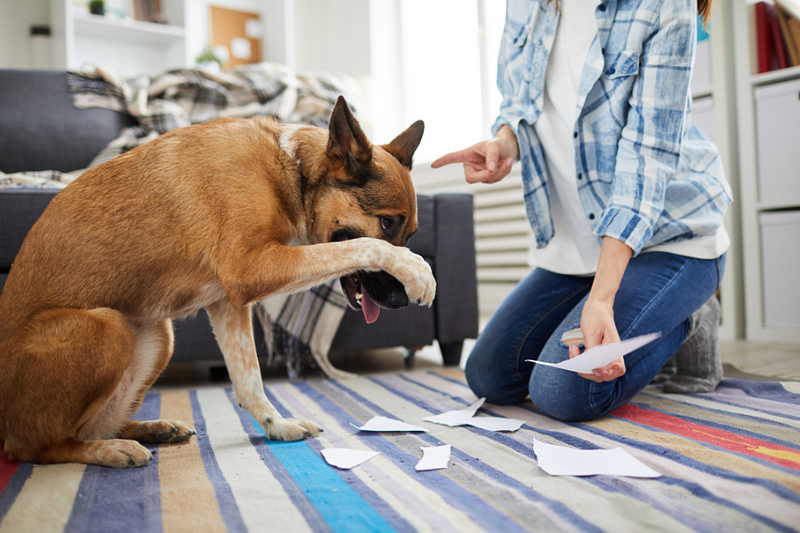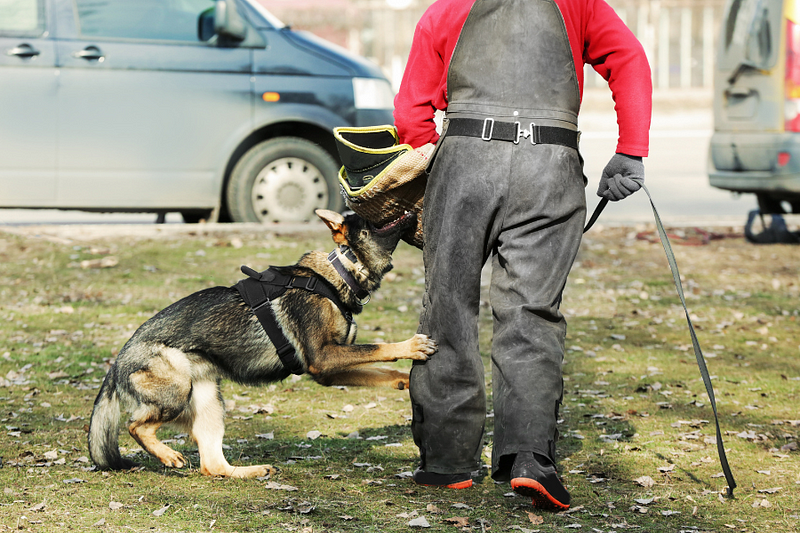Dogs are wonderful companions, but when faced with behavioral problems, they can become challenging to handle. Fortunately, with the right training techniques, most behavioral issues can be corrected, and a better relationship between dog and owner can be established. Below is a detailed explanation of various tips to overcome behavioural problems in dogs.
Understanding Behavioral Problems in Dogs
Dogs, like people, can experience behavioral problems in dogs that stem from a variety of causes, including environmental factors, lack of proper training, or medical conditions. The key to resolving these issues lies in recognizing and understanding the root cause.Common Behavioral Problems:
- Excessive Barking or Whining: Dogs often bark to communicate, but if this behavior becomes excessive, it can be disruptive. The cause may be boredom, anxiety, or attention-seeking behavior.
- Aggression: Dogs can show aggression for various reasons, including fear, territorial instincts, or protective behavior.
- Destructive Chewing: Dogs may chew out of boredom, anxiety, or teething, particularly if they are not mentally stimulated.
- Separation Anxiety: This occurs when a dog experiences extreme distress when left alone.
- Jumping on People: This is often a sign of excitement or a way to get attention.
Once the underlying cause of the behavioral problem is identified, effective training strategies can be implemented.

The Importance of Positive Reinforcement
Positive reinforcement is the most widely recommended method for training dogs and correcting behavioral problems. This training technique involves rewarding desired behavior rather than punishing undesirable behavior. This not only helps in modifying behavior but also builds trust between you and your dog.
Steps for Positive Reinforcement:
- Identify the Behavior: Reward your dog immediately after they perform the desired behavior, so they associate the reward with the action.
- Consistency is Key: Repeat the reward process consistently. For example, if you are training your dog to sit, reward them every time they do so.
- Avoid Punishment: Negative reinforcement (punishment) can confuse the dog and harm your relationship with them. Focus on rewarding good behavior instead.
By using positive reinforcement, you’re teaching your dog what they should do and not what they shouldn’t do. The more you reinforce positive behavior, the more likely it is that your dog will repeat it.
Managing Aggression in Dogs
Aggression can be a serious issue and often stems from fear, insecurity, or a lack of proper socialization. Addressing aggression requires careful training and sometimes professional help.
Tips for Managing Aggression:
- Desensitization: Gradually expose your dog to the things that trigger their aggression, at a pace that allows them to become comfortable without reacting. For example, introduce them to a new dog at a safe distance and gradually reduce the gap.
- Socialization: Regularly expose your dog to different people, pets, and environments. This helps them become more adaptable and less fearful.
- Professional Help: If the aggression is severe, it’s important to consult a professional trainer or behaviorist. They will be able to devise a tailored plan for your dog’s needs.

Tackling Separation Anxiety
Separation anxiety occurs when a dog becomes extremely distressed when separated from their owner. This can lead to destructive behavior like chewing, barking, or house soiling. Reducing separation anxiety involves helping the dog become accustomed to being alone in a gradual manner.
How to Reduce Separation Anxiety:
- Gradual Departures: Start by leaving your dog alone for short periods and gradually increase the time. This helps them get used to being by themselves without getting anxious.
- Interactive Toys: Providing toys that dispense treats or require problem-solving can keep your dog mentally stimulated and distracted while you’re away.
- Calm Exits and Entrances: Avoid making a fuss when leaving or coming home. If you create a dramatic scene, it reinforces the idea that leaving or returning is a big deal, which can increase anxiety.
Addressing Excessive Barking
While barking is natural for dogs, excessive barking can be problematic, especially if it disrupts daily life. It’s important to identify the cause of the barking before addressing it.
Steps to Minimize Excessive Barking:
- Identify Triggers: Observe what causes your dog to bark excessively. Is it the doorbell, other dogs, or boredom? Understanding the cause will help you address it.
- Provide Exercise: Many dogs bark excessively because they have too much energy. A tired dog is less likely to bark unnecessarily.
- Train with Commands: Use a “quiet” command to teach your dog to stop barking. When your dog barks, say “quiet” in a calm but firm voice, and when they stop, reward them with praise or a treat.
Creating a Consistent Routine
Dogs thrive on consistency. They feel more secure and are less likely to develop behavioral problems when they know what to expect each day.
Key Elements of a Routine:
- Set specific times for meals and walks: Consistency helps regulate their behavior and makes them feel secure.
- Incorporate training sessions: Set aside time each day for training. This not only helps curb bad behaviors but also strengthens the bond between you and your dog.
- Provide consistent rules and boundaries: Make sure everyone in the household is on the same page about what behaviors are allowed and which ones aren’t. Dogs get confused if the rules change depending on the person.
Using Mental Stimulation to Curb Destructive Behavior
A dog that’s mentally stimulated is less likely to engage in undesirable behaviors like chewing or digging. Keeping your dog’s mind active can prevent boredom, which is often the cause of destructive behavior.
Ideas for Mental Stimulation:
- Puzzle Toys: Toys that challenge your dog to solve a problem to earn a treat will keep their mind engaged.
- Obedience Training: Regularly practicing commands like sit, stay, and come keeps your dog mentally sharp and strengthens their focus.
- Hide-and-Seek Games: Hide treats or toys around the house for your dog to find. This will engage their sense of smell and encourage mental activity.
Behavioral Training Tips
- Use positive reinforcement to reward good behavior and build trust.
- Identify triggers behind behavioral problems to address them effectively.
- Provide sufficient exercise to avoid boredom-related behaviors.
- Seek professional help if behavior doesn’t improve with home training.
- Stick to a consistent routine for feeding, training, and exercise.
FAQs
Q: How long does it take to resolve behavioral problems in dogs?
A: It depends on the dog and the severity of the behavior. Consistency and patience are crucial for long-term success.
Q: Can older dogs be trained to overcome behavioral problems?
A: Yes, older dogs can still learn new behaviors with the right approach. It may take a little longer, but it’s definitely possible.
Q: Should I use punishment to correct bad behavior?
A: No. Punishment can cause fear or aggression and can harm your relationship with your dog. Positive reinforcement is more effective.
Q: When should I seek professional help for my dog’s behavior?
A: If the behavior is severe, such as biting or unmanageable aggression, or if your training efforts aren’t yielding results, it’s time to consult a professional trainer.
Q: How much exercise does my dog need to prevent behavioral problems?
A: Most dogs need at least 30–60 minutes of exercise a day, but the exact amount will depend on your dog’s breed, age, and health.
Conclusion
Overcoming behavioral problems in dogs takes time and effort, but it’s entirely possible with the right training techniques. Whether dealing with aggression, separation anxiety, or excessive barking, understanding the root causes of your dog’s behavior is the first step. By implementing positive reinforcement, creating a consistent routine, and providing mental and physical stimulation, you can correct undesirable behaviors and nurture a stronger bond with your furry companion. Visit Upstate Canine Academy to explore expert solutions for addressing behavioral challenges in dogs.
Find us on Google My Business for reviews, location, and additional information! Simply search for “Upstate Canine Academy” and connect with us today.




.png)
Comments